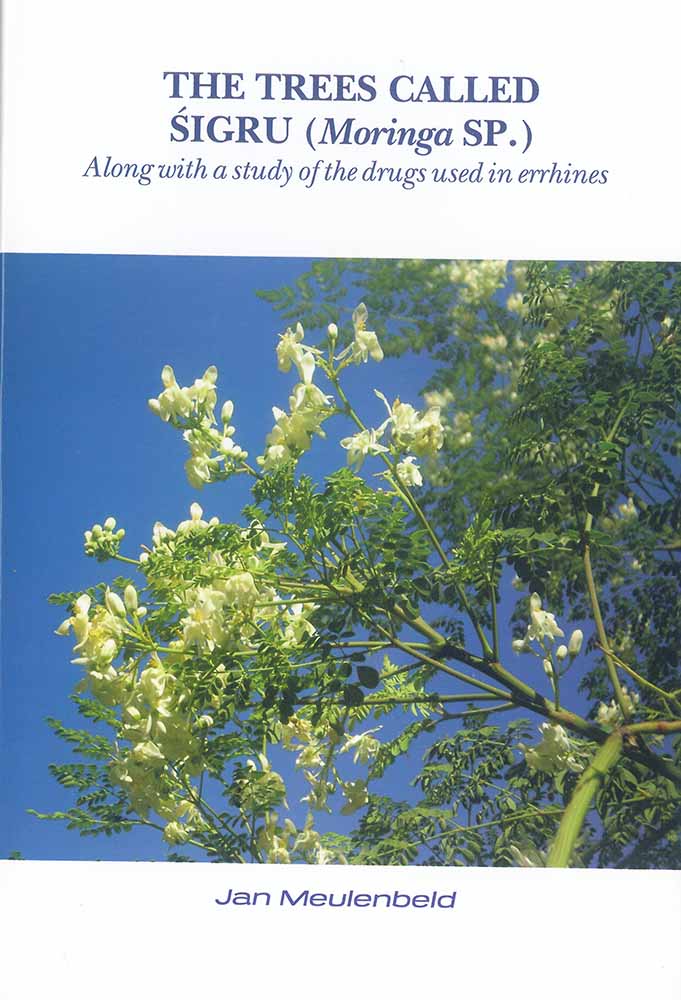The Trees Called Sigru (Moringa Sp.): Along With A Study Of The Drugs Used In Errhines
The Trees Called Sigru (Moringa Sp.): Along With A Study Of The Drugs Used In Errhines is backordered and will ship as soon as it is back in stock.
Couldn't load pickup availability
Research on the Ayurvedic materia medica, in particular its drugs of plant origin, is a venture bristling with pitfalls despite the apparent confidence displayed in the lists of botanical identifications of medicinal plants in numerous publications on the subject. This self assurance is unwarranted in quite a few cases, as this study will demonstrate.
The majority of these lists of botanical equivalents of Sanskrit plant names are not based on own research; instead, they usually reflect a consensus reached somehow among Indian Ayurvedic scholars. The course of events that resulted in this agreement remains uninvestigated. Setting aside the role of leading authorities and trend-setting publications, one of the factors involved may be the significance of a seemingly trustworthy and scientifically-looking pharmacopoeia for the Indian Ayurvedici in their competition with western medicine. In this respect the developments referred to are understandable.
From a strictly scientific point of view caution is required. When trying to take stock of the situation, one's attention is arrested by the prevalence of North- Indian influences and opinions in the secondary literature on the Indian materia medica. The concurrence mentioned is a North-Indian product that may be looked upon as an artefact since regional differences in the identifications tend to be disregarded. Though exceptions do occur, most often books by authors hailing from northern India fail to pay attention to the plants employed under the same Sanskrit names in southern India and areas such as, for instance, Gujarat and Orissa.
About the Author:
JAN MEULENBELD (28 May 1928-March 26, 2017) was a physician-scholar who taught and published major works of research in Indology. Born in Borne, Overijssel, he studied medicine, and Indology under Jan Gonda, at Utrecht university. From 1954 he worked as a psychiatrist. At the end of the nineteen- sixties he returned to Indology. Immediately after receiving his doctorate in Sanskrit, Meulenbeld began to write the historical overview of the Indian medical literature. From 1978 he worked as Associate Professor of Indology at the University of Groningen and as a psychiatrist at the Van Mesdagkliniek also in Groningen. In 1986 accepted a full-time job at the Van Mesdagkliniek when the Institute of Indic Languages and Cultures of the University of Groningen was closed as part of a Dutch policy of retrenchment in the study of Asian cultures.. He worked at the Van Mesdagkliniek until his retirement in 1988.
Meulenbeld's book-length monographs include: Mahādevadeva's Hikmatprakāśa: a Sanskrit treatise on Yunani medicine. Part I: text and commentary of Section I with an annotated English translation; Part II: selected passages from text and commentaries of Section II with an annotated English translation; The Sitapitta group of disorders (urticaria and similar syndromes) and its development in Ayurvedic literature from early times to the present day; History of Indian Medical Literature, and Madhavanidana: English translation with principal commentaries chapters 1-10. Reprinted MLBD, Delhi, 2008
-
Pages
-
Edition
-
Size
-
Condition
-
Language
-
Weight (kg)
-
Publication Year
-
Country of Origin
-
Territorial Rights
-
Reading Age
-
HSN Code
-
Publisher




